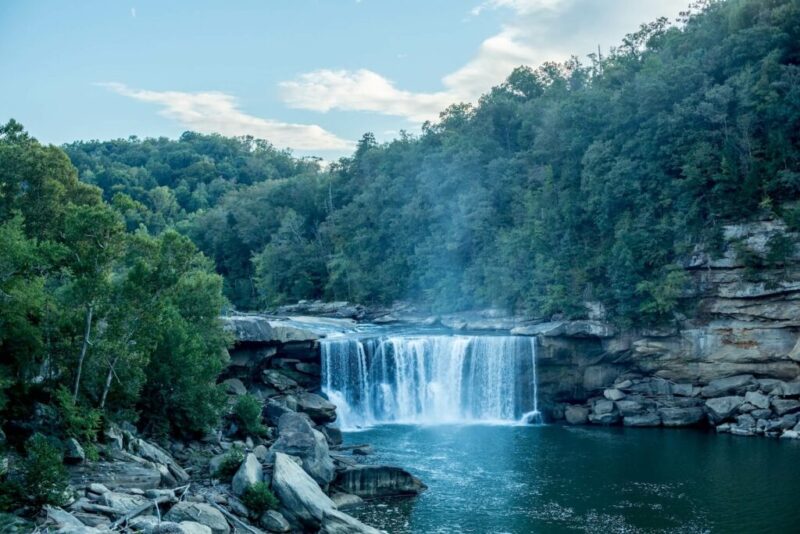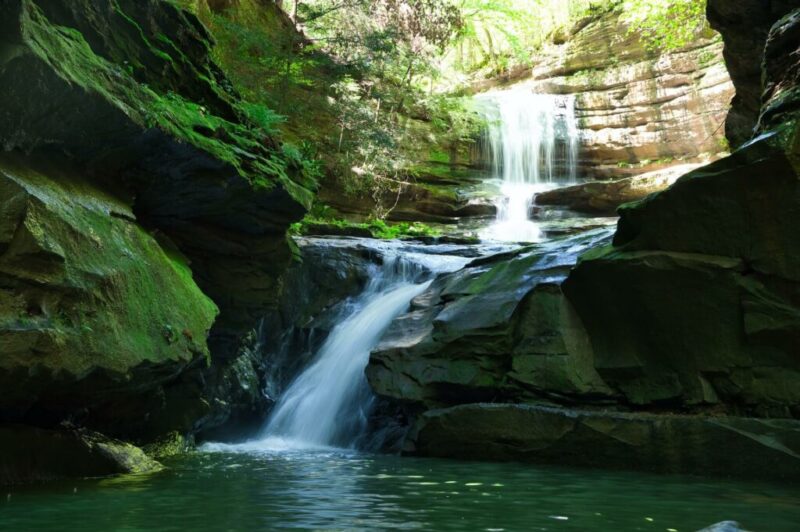In the United States, Kentucky is known as the “Bluegrass State.” This state is mostly located in the Appalachian Mountains. It has many diverse geographical regions.
The climate in Kentucky also varies depending on what region you are in. But does it snow in Kentucky?
In the eastern part of Kentucky, the climate is more similar to the southeastern United States.
The western part of Kentucky has a more similar climate to the Midwestern United States.
Central Kentucky has a climate that is a mix of both the eastern and western parts of the state.
In this blog, Let’s find out whether Kentucky experiences snowfall or not.

Does it Snow in Kentucky?
Yes, it does snow in Kentucky! In fact, the state sees an average of 9 to 11 inches of snowfall each year.
However, some parts of the state see more snow than others. For example, the city of Louisville averages about 15 inches of snowfall each year, while the town of Bowling Green sees an average of only 5 inches.
So, if you’re hoping to build a snowman or go sledding this winter, you’ll have a better chance in some parts of Kentucky than others.
But no matter where you are in the state, it’s always a good idea to be prepared for winter weather!
How Often Does it Snow in Kentucky?
Although Kentucky is known for its humid climate, the state actually sees a fair amount of snowfall each year.
The central and northern regions of the state generally see the most snow, with an average of 12 to 18 inches per year.
The southern region of the state sees a bit less snow, with an average of 4 to 8 inches per year.
When Does it Snow In Kentucky?
In Kentucky, It typically snows in December, January, and February. However, it can start snowing as early as November and as late as March.
The Climate in Kentucky

Most of Kentucky has a humid continental climate (Köppen climate classification Dfa/Dfb), with hot, humid summers and cold, moderately snowy winters.
The extreme southern portion of the state has a subtropical climate (Cfa). Kentucky experiences four distinct seasons, with substantial variations in the severity of summer and winter. The annual average temperature in Kentucky is 54.3 °F (12.4 °C).
Kentucky is located within the Upland South region and experiences milder winters than most states within this region.
As Kentucky’s weather is moderate, with four distinct seasons. The average high temperature in summer is 86 degrees (30 degrees Celsius), and the average winter high is 46 degrees (8 Celsius).
Spring and fall temperatures are usually in the 60s (15-20 Celsius). precipitation statewide averages about 45 inches (114 cm) a year.
But the spring season in Kentucky can be variable, with some years seeing substantial tornado activity.
On average, however, Kentucky sees few tornadoes compared to other states in Tornado Alley.
Kentucky often receives snowfall in the winter months from storms that form along the convergence boundary between warm moist air from the Gulf of Mexico and cold, dry air from Canada.
These storms can occasionally be followed by an outbreak of arctic air, bringing sub-zero temperatures.
Lington, Kentucky, gets about 9 inches (23 cm) of snow per year. Nearby Louisville, Kentucky, usually gets about 10-12 inches (25-30 cm) of snow per season, while far southern Kentucky locations such as Bowling Green get very little snow, if any.
The average high in January is 50 °F (10 °C), and the average low is 29 °F (−2 °C). The highest recorded temperature was 114 °F (46 °C), which occurred twice, once on July 28, 1930, at Greensburg and again on June 29, 2012, at Louisville.
Things to Do in Kentucky in Winter

Although it might not seem like the first thing that comes to mind, there are actually quite a few fun things to do in Kentucky during the winter months! From snow tubing and sledding to ice skating and skiing, there are plenty of ways to enjoy the cold weather.
One popular winter activity in Kentucky is snow tubing. Snow tubing is a great way to enjoy the snow without having to deal with cold temperatures for too long. There are a few different places in Kentucky that offer snow tubing, so you can check out a few different locations to find one that you like the best.
Another popular winter activity in Kentucky is sledding. Sledding is a great way to spend an afternoon with family and friends, and there are plenty of hills in Kentucky that are perfect for sledding. If you don’t have your own sled, you can usually rent one at one of the local sledding hills.
Ice skating is a great option if you’re looking for something a little more active. Ice skating is a great workout, and it’s also a lot of fun. There are several ice rinks in Kentucky, so you should be able to find one that’s close by.
Finally, if you’re looking for something truly unique, consider taking a trip to visit one of Kentucky’s many wineries. During the winter months, many wineries offer special tours and tastings that are perfect for visitors of all ages.
Conclusion: Does it Snow in Kentucky?
The results are in, and the answer is a resounding yes! It does snow in Kentucky, albeit not as much as in some of the other states in the US. Nevertheless, if you’re planning on spending Christmas in Kentucky, make sure to pack your winter gear!
FAQs: About Snow in Kentucky
1. How much snow does Kentucky usually get?
2. What are the best places to go sledding or tubing in Kentucky?
3. How do I prepare my home for a winter storm?
Related Posts:
- Does It Snow In Joshua Tree National Park? Exploring…
- Does It Snow In St. Louis, Missouri? Winter Wonders Await
- 10 Things to Do in Hickory NC 2024: From Furniture…
- Does it Snow in Cairo? The Tale of Snow in Egypt's Heartland
- Does It Snow In Louisville, Kentucky? Bourbon and…
- Does It Snow In Ketchikan, Alaska? Exploring the…






